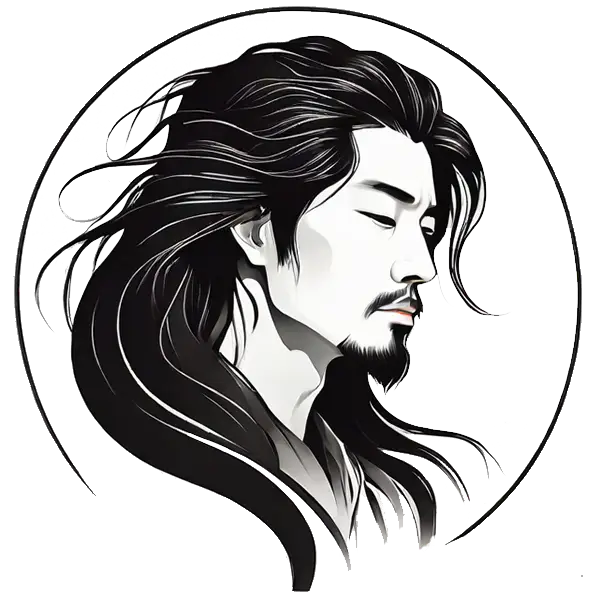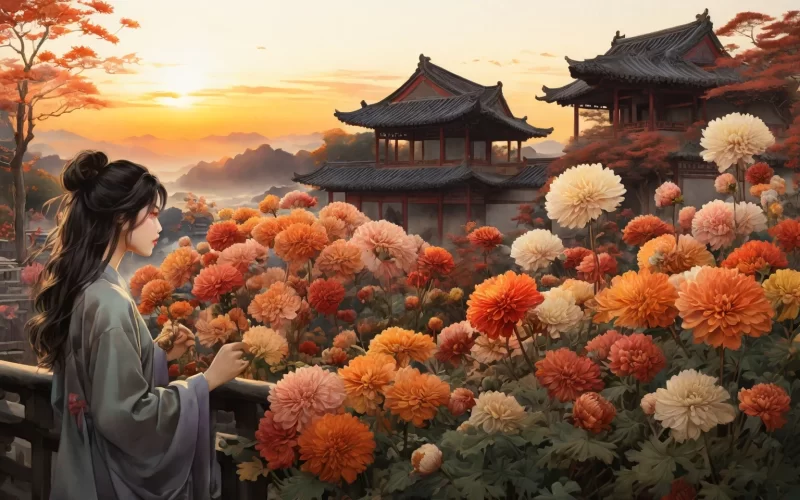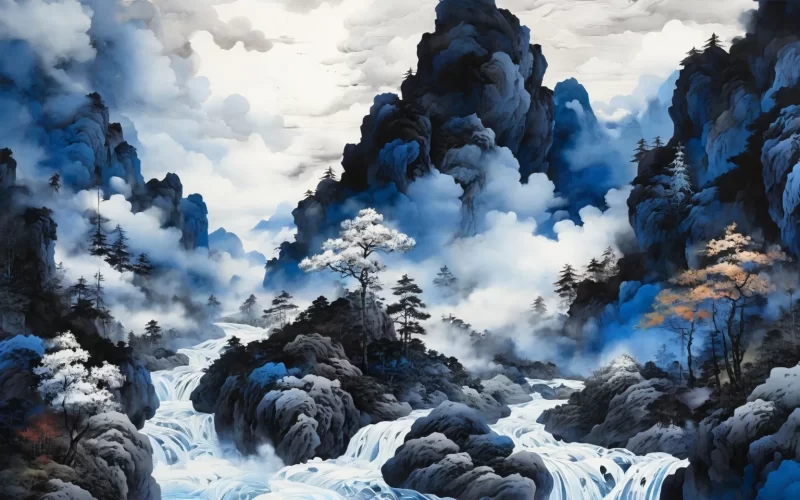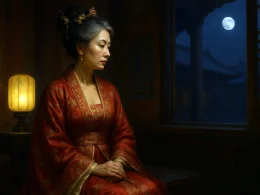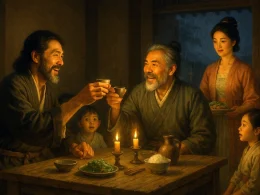Around the cottage like Tao's autumn flowers grow;
Along the hedge I stroll until the sun slants low.
Not that I favor partially the chrysanthemum,
But it is the last flower after which none will bloom.
Original Poem
「菊花」
元稹
秋丛绕舍似陶家,遍绕篱边日渐斜。
不是花中偏爱菊,此花开尽更无花。
Interpretation
This work "Chrysanthemums" was composed by Yuan Zhen in 802 CE during the late autumn of Emperor Dezong's Zhenyuan era, inspired by chrysanthemum viewing in Chang'an. At this time, Yuan Zhen was at the dawn of his political career, yet untouched by its later tribulations. More than a pastoral vignette, the poem reflects his admiration for the flower's steadfast spirit, standing apart among Tang-era chrysanthemum odes.
First Couplet: « 秋丛绕舍似陶家,遍绕篱边日渐斜。 »
Qiū cóng rào shě shì Táo jiā, biàn rào lí biān rì jiàn xié.
Autumn blooms crowd my hut like Tao Qian's abode; Circling the fence, I lose time as sunlight fades.
The repeated "encircle" (绕) mirrors both the flowers' profusion and the poet's absorption. "Tao's home" (陶家) invokes the recluse-poet Tao Yuanming, aligning Yuan Zhen's serenity with his idol's ethos. The tilting sun paints a scene of tranquil obsession.
Second Couplet: « 不是花中偏爱菊,此花开尽更无花。 »
Bú shì huā zhōng piān ài jú, cǐ huā kāi jìn gèng wú huā.
Not that I favor chrysanthemums alone— But when these fade, no flowers remain.
A masterstroke of understatement. The seeming denial ("Not that I favor…") pivots to reveal the flower's true merit: its defiance of seasonal decay. The lines distill admiration into inevitability—a quiet manifesto of resilience.
Holistic Appreciation
Compact yet philosophically rich, the poem moves from scene to revelation. The first couplet's pastoral calm ("sunlight fades") sets the stage for the second's emotional pivot—from observed beauty to existential truth. Yuan Zhen transcends clichés of floral praise by framing the chrysanthemum as time's last gift, its value measured by absence.
Artistic Merits
- Literary Allusion: The Tao Qian reference elevates flower-viewing to spiritual communion.
- Economy of Language: Phrases like "lose time" (日渐斜) capture devotion without excess.
- Structural Precision: Two observational lines prepare for two declarative ones—a seamless arc.
- Layered Meaning: The final line's surface simplicity ("no flowers remain") belies its depth, celebrating endurance through negation.
Insights
Yuan Zhen's chrysanthemums teach us to cherish what endures when all else fades. His aesthetic choice—to prize the last bloom—mirrors a moral stance: integrity shines brightest in barren seasons. The poem whispers a challenge: to stand firm when others wilt, and find beauty in solitary defiance.
Poem translator
Xu Yuanchong (许渊冲)
About the poet
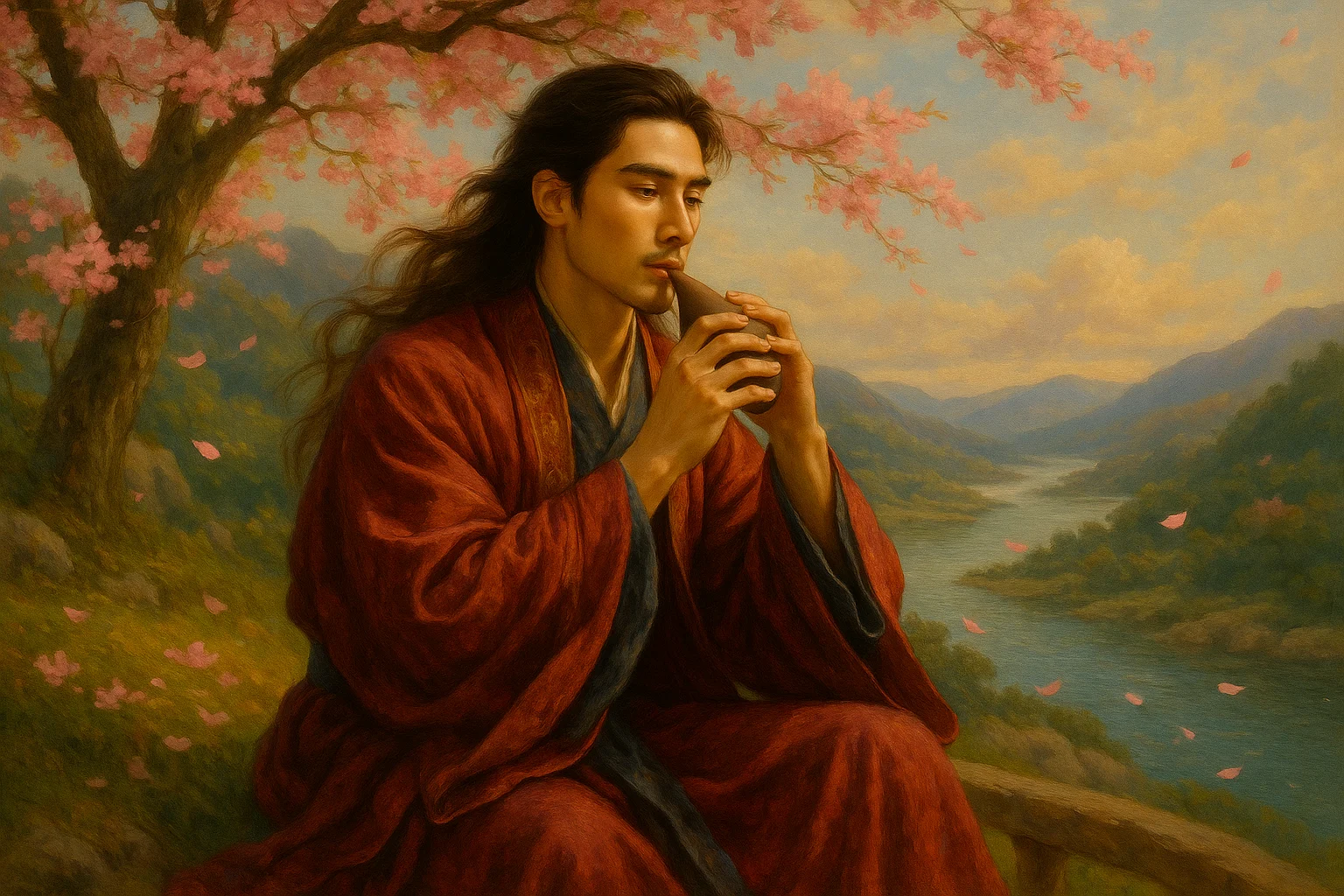
Yuan Zhen (元稹), 779-831 A.D., was a native of Luoyang, Henan Province, who was poor in his early years, but later became an official and finally died of a violent illness. He was friendly with Bai Juyi and often sang with him, and was known as “Yuan Bai”.
